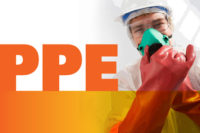
Hearing protector performance has long been the weak spot in hearing conservation programs. Advice from the regulators as well as the hearing conservation community have led health and safety practitioners to more or less disregard the labeled Noise Reduction Rating (NRR), with OSHA’s guidelines giving “credit” for less than half of the labeled value.
Individual fit testing of HPD, much like quantitative fit testing for respirators, has become a viable process that allows hearing conservationists to make a reasonable assessment of how well individual workers are fitting HPD, and the amount of protection they can be expected to receive.
Basic technologies
There are two ways to test earplugs while in use. One is to provide a hearing test to a worker with and without earplugs; the difference between the two tests indicates how well the earplugs work.
The other general approach is called microphone in real ear, or MIRE testing. In this approach, sound levels are measured outside the earplug and inside the earplug, with the difference reflecting HPD performance.
Each of these technologies has been adapted for field use in different ways. The systems described here are available in the U.S.; other systems are under development in the EU and elsewhere.
Subjective systems
Versions of “hearing test earplugs in – hearing test earplugs out” have been in use for some time. With some caveats, it is possible to use existing hearing test equipment to conduct this type of test. The design of audiometer earphones is such that they may touch an earplug while in the ear, leading to erroneous fit test results.
FitCheck™ from Michael and Associates (http://michaelassociates.com/) uses a modified hearing test system with specially designed high-volume high-output earphones. A new variant to the subjective test is the VeriPro™ from Sperian/Howard Leight (http://www.howardleight.com/veripro). Instead of requiring the worker to respond to test tones at their hearing threshold (“push the button when you can hear the sound”), it uses a loudness balance protocol. The VeriPro system works with any kind of earplug. This process of loudness balance is a different type of skill for workers, but is not difficult to master. The E-A-Rfit™ system from Aearo Technologies (a 3M Company) and Sonomax Hearing Healthcare (http://www.E-A-Rfit.com), uses a modified microphone-in-real-ear approach to assess individual HPD performance. Field-microphone-in-real-ear, or F-MIRE, looks remarkably like quantitative fit testing of respirators, only counting decibels (dB) instead of particles.
Critical data
The most essential piece of information to be generated by these systems is the PAR, or personal attenuation rating. This reflects the amount of protection the worker got from this fitting of this earplug. It is compared to the workers’ noise exposure to determine sufficiency — is the worker protected to the target level?
Variability is inherent in the HPD fitting process, and the same person using the same earplug may get different protection levels on different days. This variability can be addressed by testing the same person in repeated trials.
Using the information
How is the information generated by these systems useful?
These systems can be valuable as a training tool. OSHA has specific requirements for training workers on how to use HPDs (29 CFR1910.95(i)(4) and 29 CFR 1910.95 (i)(5)). Quantitative fit test results can serve as evidence that this training was provided and how effective it was.
Most HPDs are dispensed and most training on HPD use is conducted by people with little or no training on how HPDs should be fit. These systems can be used as a train-the-trainer tool to teach others how to spot a good HPD fit and how to train employees in HPD use.
When standard threshold shift (STS), a specific configuration of hearing loss, is detected in a noise-exposed worker, OSHA requires reevaluation of the HPD used by the worker and its sufficiency for the noise the worker is in each day. Fit testing can provide useful information about the workers’ HPD use and sufficiency.
Documentation generated from fit testing systems can provide useful information on hearing protector adequacy and training, as the systems provide a written record of the attenuation achieved by the individual worker for the given hearing protector fitting.
Aggregate data can be used to help assess the overall effectiveness of an employer’s hearing conservation program.
Individual fit testing results allow selection of HPDs appropriate for a given worker and their noise environment. This can be important for workers whose jobs have a critical auditory component — where hearing machine cues or warning signals is an essential part of safety and productivity on the job.
Most workers select HPDs for reasons other than the protection they offer. Ease of fitting, perceived comfort, and even color tend to be the overriding selection criteria. Fit testing systems can add protection level to those criteria by quantifying and demonstrating to workers that their selection of an HPD either does or does not provide enough protection for the noise on their jobs.
Fit testing hearing protection is a concept whose time has come. Today’s technologies can become an important and integral part of effective hearing conservation programs by closing the loop, and adding HPD performance data to our efforts.
